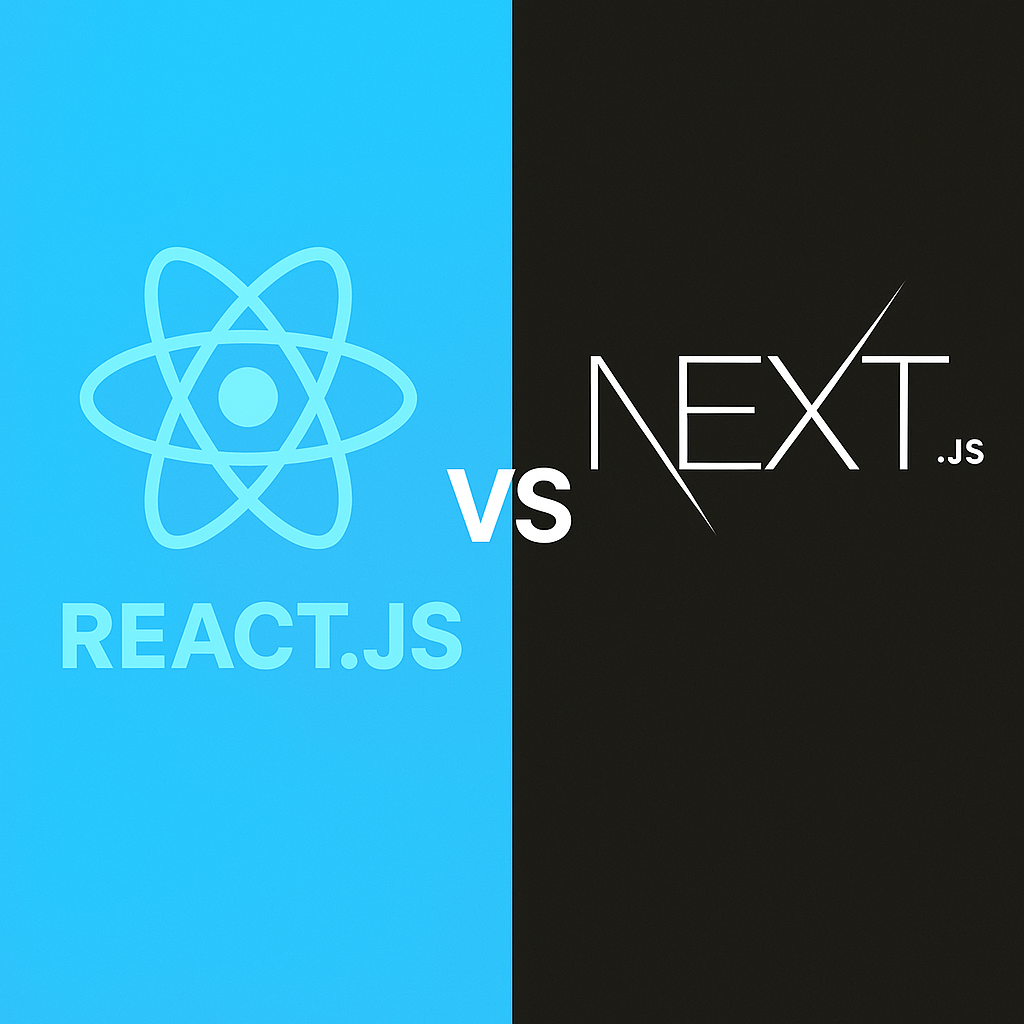React.js vs Next.js Which One Should You Choose?

Introduction
When it comes to building modern web applications, React.js and Next.js are two of the most popular choices among developers. While React.js is a powerful library for building user interfaces, Next.js is a framework built on top of React that enhances its capabilities. In this blog, we’ll compare React.js and Next.js, discussing their features, advantages, and ideal use cases to help you make the right decision for your project.
What is React.js?
React.js, developed by Facebook, is a JavaScript library used for building dynamic and interactive user interfaces. It follows a component-based architecture and allows developers to create reusable UI components. React is widely adopted because of its flexibility, strong community support, and rich ecosystem.
Advantages of React.js
- Component-Based Architecture: Encourages code reusability and modular development.
- Virtual DOM: Improves performance by updating only the necessary parts of the UI.
- Rich Ecosystem: Supports various third-party libraries and tools.
- Strong Community: Large developer support with extensive documentation.
- Flexibility: Can be integrated with different backends and frontend libraries.
When to Use React.js
- When building SPAs (Single Page Applications).
- When requiring full control over the application structure.
- When integrating with different frameworks or libraries.
- When prioritizing client-side rendering (CSR).
What is Next.js?
Next.js is a React-based framework developed by Vercel that extends React’s capabilities by providing built-in features like server-side rendering (SSR), static site generation (SSG), and API routes. It simplifies the development process and improves performance, making it an excellent choice for production-ready applications.
Advantages of Next.js
- Server-Side Rendering (SSR): Improves SEO and initial load performance.
- Static Site Generation (SSG): Enables pre-rendering for faster page loads.
- Automatic Code Splitting: Optimizes performance by loading only necessary code.
- API Routes: Allows backend functionalities within the same project.
- Built-in Routing: Simplifies navigation without external libraries.
- SEO-Friendly: Helps with search engine optimization.
When to Use Next.js
- When SEO and performance are top priorities.
- When requiring server-side rendering (SSR) or static site generation (SSG).
- When building eCommerce, blogs, or marketing websites.
- When needing a backend for small-scale applications using API routes.
Key Differences Between React.js and Next.js
|
Feature |
React.js |
Next.js |
|
Rendering |
CSR |
SSR, SSG, CSR |
|
SEO Support |
Limited |
Excellent |
|
Routing |
Requires React Router |
Built-in Routing |
|
Performance |
Dependent on CSR |
Optimized with SSR/SSG |
|
Learning Curve |
Easier for beginners |
Slightly complex due to SSR/SSG |
|
API Routes |
Requires external backend |
Built-in API routes |
|
Deployment |
Flexible but requires setup |
Optimized for production |
Conclusion
Choosing between React.js and Next.js depends on your project’s requirements. If you need a flexible, client-side rendered application with complete control, React.js is a great choice. However, if you want built-in server-side rendering, improved performance, and SEO benefits, Next.js is the better option.
For SPAs and highly interactive applications, React.js is suitable, whereas for SEO-driven, fast-loading websites like blogs, eCommerce stores, and dashboards, Next.js is the ideal choice.
Both technologies are powerful, and your decision should be based on the needs of your project and the desired user experience.
1 year before